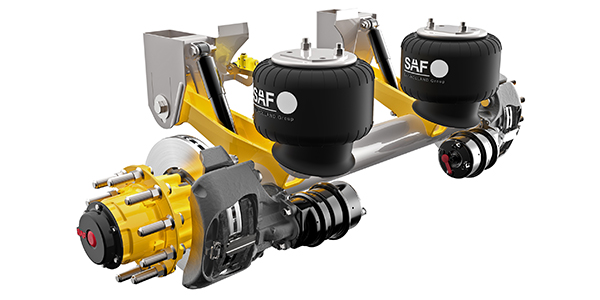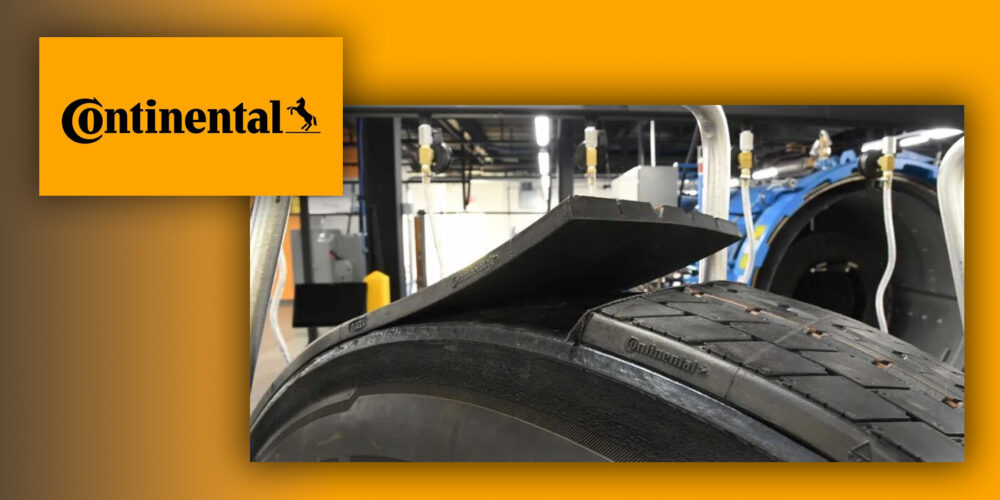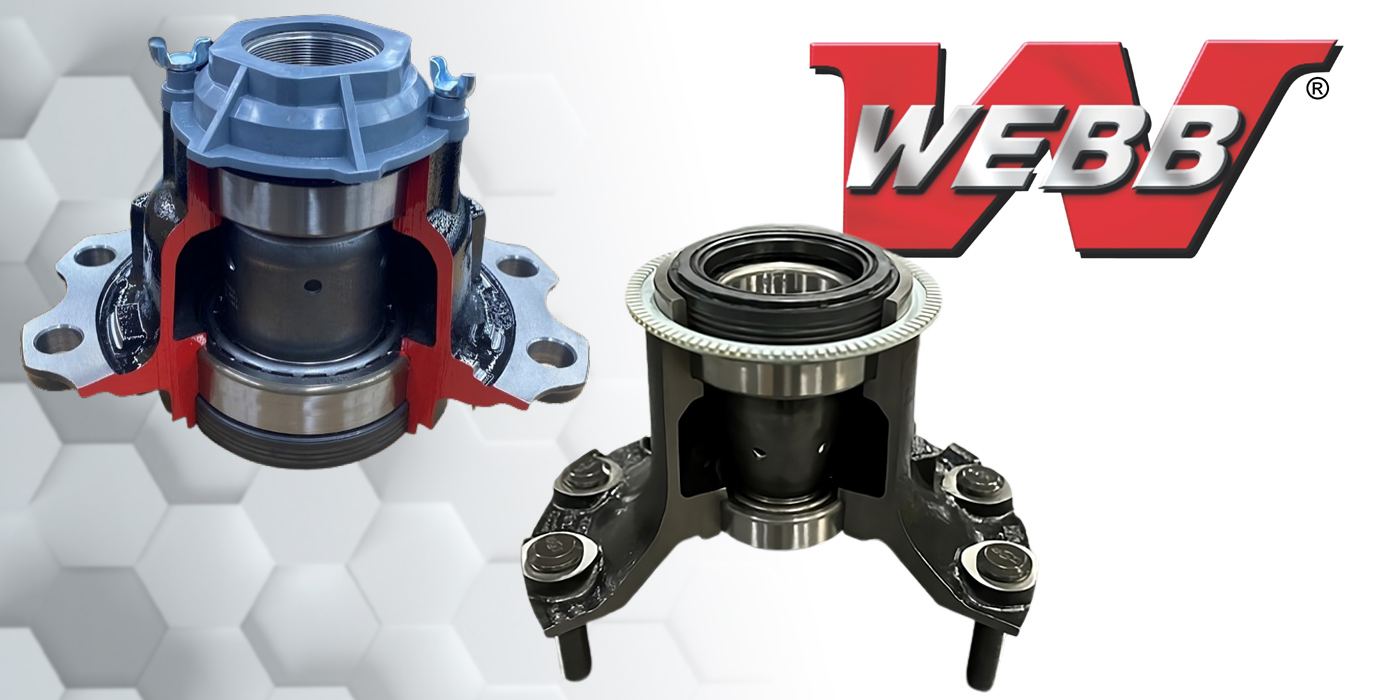If you’re an established fleet, chances are you have go-to specs for your trucks that you’ve stuck to for a long time. As well as those choices might have worked for you up to this point, it’s a good idea to re-evaluate them every once in a while. If they’re still working for you, that’s great! You’re all set. If there are better options or newer technologies out there, those are most likely worth exploring.
Either way, it’s best to know.
Suspensions are a perfect example of this. You likely have an established suspension choice for each of your truck routes, but it’s good to make sure you’re up to date on the options you have and on the new technology that’s become available.
“Suspensions can be difficult to specify because compromises almost always need to be made,” points out Jason Heath, product manager for Neway truck suspensions at SAF-Holland. “The buyer will want a low price, the driver will want a nice ride, the maintenance manager will want durability, and the application may require extra stability.”
Heath recommends asking yourself this suspension-focused spec question: “What does my current suspension do well, and what do I need to improve?”
“Make sure to speak with your drivers, buyers and maintenance people,” he continues. “They will certainly have an opinion. Once you have this information, speak with an experienced salesperson at your preferred dealership. This is an important step because every truck brand carries different suspension options. Let them know your goals in order for them to help you. Whenever you make changes to a truck spec, you may want to consider ordering a few trucks to evaluate before converting your whole fleet.”
The basics of suspension spec’ing involve choosing between the two types of suspensions—air ride and leaf spring—but there’s more to it than that.
We’ve said it before but it bears repeating: application is key when it comes to choosing the right equipment for your truck. This is especially true when it comes to suspensions, since they affect the driver’s comfort level as well as the truck’s performance. So, for example, long-haul on-highway fleets typically go with an air ride suspension for driver comfort, while off-road applications and severe-duty trucks will require particularly sturdy suspensions that can handle whatever the job throws at them. The environmental conditions of the truck’s route should also be considered.
According to William Hicks, product manager for trailer suspensions systems with SAF-Holland, checking which types of suspensions have large market shares in certain applications can be a shortcut to figuring out what kind of suspensions you need, since there’s usually a reason fleets in those applications are eager to spec them.
“For example,” he begins, “on-highway tractors are almost exclusively air ride drive axles, while the front axle is a long tapered leaf spring with limited air suspension penetration. We see more of a mix between mechanical and air ride drive suspensions in vocational tractor applications, dependent upon the particular target vocation, with certain segments being more air than mechanical or vice versa.
“On the trailer side, the largest segment is on-highway dry freight vans, which have seen a shift towards the mechanical spring ride tandem sliders, which are now the majority rather than air ride systems,” he adds. “Both systems garner significant share. For specialty trailers like tanks, flatbeds, bulk, etc., the air ride is the system of choice, which can be traced to the overall value of the trailer and the expected longer service life.”
Truck vs. trailer
There are specific considerations that only apply to either truck or trailer suspensions, so it’s important to know the differences between what each suspension will require. It’s no good assuming that both the truck and trailer can use the same type of suspension just because they’re running the same route.
“For steer axles, the wheel-cut needs to be matched to the available clearances and matched to the appropriate steering geometry,” says Stephen Hampson, director of marketing for Hendrickson Commercial Vehicle Systems. “The suspension rating should compatible with the load carried.
“For drive axles, the interactions with the driveline and its behavior under braking or acceleration is an important consideration, together with ensuring the suspension is matched to the correct pinion angle,” he continues. “In addition, care needs to be taken on matching the suspension roll stiffness to the load and center of gravity of the vehicle, especially when fully loaded.”
According to SAF-Holland’s Hicks, the biggest difference between trailer and tractor suspensions is tractive effort.
“In other words,” he elaborates, “the drive axle suspensions on the tractor need to be more compliant to keep the tires more engaged with the ground from a traction standpoint under all or most road conditions. This compliance allows for greater axle travel in the vertical and diagonal directions; however, it compromises some roll stability to accommodate compliance.”
This is where the trailer suspension contributes to the overall vehicle system. It has greater roll stability with less axle articulation because the trailer axles are not driven; thus, they work together well as a complete system.
“One aspect that is unique to truck suspensions is the fact that suspensions cannot be welded to the frame and must be bolted. Therefore, frame brackets and air spring brackets are designed differently for trailers and trucks,” SAF-Holland’s Heath says. “Truck suspensions tend to offer better ride performance compared to trailer suspensions because they transport not just cargo but also passengers. Cargo often does not require the same amount of ride performance, depending on the type of cargo. Truck suspensions must adapt to drive axles that are different in shape than trailer axles. Drive axles also induce different loads into the suspension.”
Suspension integration
Speaking of adapting to axles, it’s important to take into account the ways in which the suspension works in concert with other components on the truck or trailer. It’s always a good idea to take a comprehensive view of all the parts you’re spec’ing on your truck or trailer to make sure that everything is compatible as a system. In particular, the suspension works together with the axles, brakes and tires.
Let’s take them one by one.
First, the axles. SAF-Holland’s Heath has mentioned the need to adapt to the drive axle on the truck. He went on to say that truck suspensions are “married to the drive axle, and not all drive axles can be supported, so it is very important to work with your dealer to make sure the suspension is compatible with the axle you require.”
Next: the brakes. According to SAF-Holland’s Hicks, while in the past the fleet had to worry about various issues related to the integration of the braking system with the suspension, the systems approach (where the choice of brake systems is pre-packaged or pre-engineered for proper performance and clearances regardless of brake choice) favored by the major suspension suppliers for trailer OEMs alleviates those concerns for the fleet. This approach, Hicks says, has addressed many issues in the past related to the trailer OEM purchasing all the sub-systems (suspension, axles, brakes, wheel ends, etc.) separately and having to deal with fitment and compatibility issues.
This is great if you have a newer suspension, but older suspensions do have some potential issues to keep an eye on. SAF-Holland’s Heath points out that many older suspensions were designed only for drum brakes and are not compatible with disc brakes because there is not enough space for the brake chamber. This will have an impact on your brake choices, so be sure you check the compatibility of the suspension before ordering brakes for a truck with an older suspension.
Lastly: the tires.
Hendrickson’s Hampson points out that the potential use of tire chains is one thing to consider. If your fleet uses tire chains in the winter or runs routes in mountainous areas, then that may affect the fit of the suspension with the tires and wheels.
Ride height is another important consideration when it comes to suspensions, especially if you are thinking about air ride suspensions. According to SAF-Holland’s Heath, it is important to understand that one of the most frequent issues with air ride suspensions has nothing to do with the suspension at all, but has everything to do with its air controls such as the height control valve.
“The height control valve is responsible for maintaining the ride height of the suspension,” Heath says. “We always recommend using premium air controls to help eliminate downtime from these issues.
“We also recommend that you work closely with your dealer to determine the best ride height for your application during the specification process,” he added. “This is important as making a ride height change later could be a costly venture, because new components like air springs, shocks and frame brackets may be required. If you suspect that the ride height for your application is incorrect, see your local dealer to make the adjustments. Do not make vehicle ride height adjustments on your own.”


















